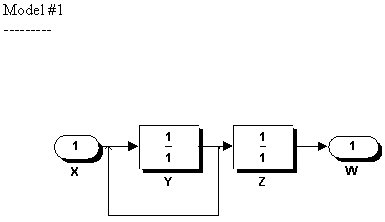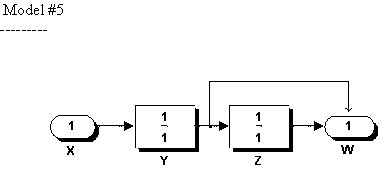Causation modeling techniques which are widely adopted in Physics & Engineering establishes a flow-diagram of causes & effects, which are what the 'laws of physics are basically about', in a chain relationship of variables such that a cause 'x' produced an intermediate effect 'y' which in turn acts an intermediate secondary cause to produce an intermediate secondary effect 'z', which it then acts as a third intermediate cause to produce third intermediate or final effect 'w', and on, and on, ...
Here is a simple open loop of a causation diagram of the above example (common terms used by engineers & physicists is called block-diagram).
x --> y --> z --> w
Climate physical realities are not open loop as above but a dynamical feedback close loop system as one of the possible structural variable relations shown below:
 All the causation models depicted above (if my diagrams will be parsed & drawn exactly as I post this message) established a cause & effect between input X which is the 'cause' and output W which is the effect. The intermediate variables Y and Z are unobservable, the only observables are X and W, while Y and Z are not visible to us.
All the causation models depicted above (if my diagrams will be parsed & drawn exactly as I post this message) established a cause & effect between input X which is the 'cause' and output W which is the effect. The intermediate variables Y and Z are unobservable, the only observables are X and W, while Y and Z are not visible to us.
FACTS:
-----
#1) In black box statistical inferences modeling you have something like this:
x --> ? --> w
The question mark depicted in the above diagram establishes nothing about the physics (ie, cause & effect) , it is just pure induction of trying to correlate cause 'x' & effect 'w'. The question is where is the physics?
We do have the data for both X & W (cause-&-effect), but we know very little or nothing else of what are the intermediate steps between input X (cause) and output W (effect) in a climate dynamical systems. Also we know nothing about of which structural variable relation as depicted in Model #1, Model #2, etc, of which is the correct ones, even if the unobservable variables Y and Z have been identified.
#2) All the structural variable cause-&-effect relations depicted in Model #1, Model #2, Model #3, and so forth above could be functionally THE SAME. This means that you could apply the same input (cause) X and output (effect) W in to the dynamical systems to be modeled which fits the data to a high degree, however selecting which of the 5 models , ie, Model #1, Model #2, and so forth that fits physical reality (causality) is another different matter, which is still unknown today. This basically says that there are many possible causation models that fit the data, but only one will represent physical processes that govern the climate dynamics and this single process has not been identified yet.
Important Notes:
----------------
a) The variable structural relations depicted in Model #1 to Model #5 are not exhaustive, I could have come up with more, but I think 5 are enough to make my point. I also used 4 variables for simplicity, where as in reality the number of variables is huge, where most of those are still unknown.
b) Any of Model #1 to Model #5 is called a 'dynamical system' or 'closed-loop feedback or feed forward dynamical system'. Currently it is not known how many of such systems are there in climate dynamical systems. The other point is, scientists have no idea of how these independent 'closed-loop feedback or feed forward dynamical systems' are structurally related to each other. Some of these sub-systems are coupled to each other. The atmospheric systems & oceanic systems have now been coupled together in a still yet simplistic model by climate scientists.
c) Model #1 to Model #5 are SISO (single input - single output), which I simplified to make my point clear, but in reality, climate is MIMO (multiple input - multiple output).
d) If you have a huge number of potential climate variables, where the majority are to be discovered and a huge number of independent 'closed-loop feedback or feed forward dynamical systems', then image how complex when you hook-up each and every variable and every closed-loop system to form a one holistic climate earth systems and this is what you call PHYSICS.
Now, if anyone thinks that Falafulu is a nutter & denier, please read what this NASA sponsored workshop proposed in improving the climate modeling by adopting physics of causations rather than black-box statistical inferences.
"WORKSHOP ON CLIMATE SYSTEM FEEDBACKS"
http://grp.giss.nasa.gov/reports/feedback.workshop.report.html
The person who chaired the workshop above was Dr. Rossow of NASA and here is one of the first peer review papers to be published relating to the problems in climate modeling which they raised during the workshop. Here is Dr. Rossow's paper, I recommend that you read the problems he cited in his paper , just skip the mathematical derivations part, and concentrate on the non-math part which still makes it readable to non-expert in math’s or engineering.
"Inferring instantaneous, multivariate and nonlinear sensitivities for the analysis
of feedback processes in a dynamical system: Lorenz model case-study"
http://pubs.giss.nasa.gov/docs/2003/2003_Aires_Rossow.pdf
If you're curious about the theory behind feedback dynamical systems, then here is some diagrams from wikipedia to take a peek at.
"Control theory"
http://en.wikipedia.org/wiki/Control_theory


